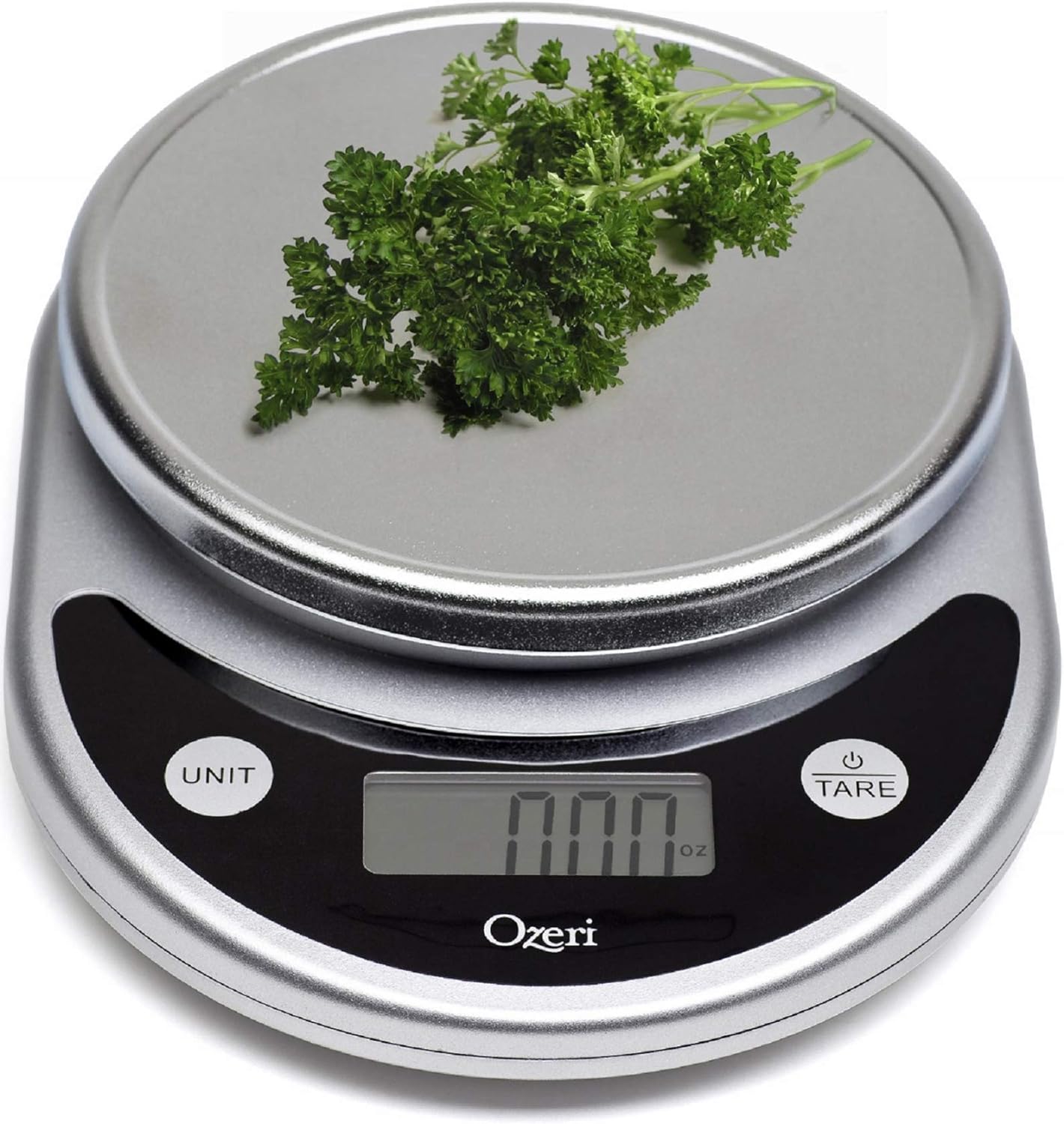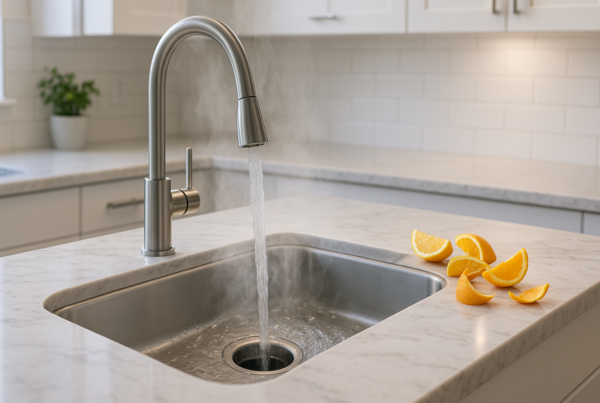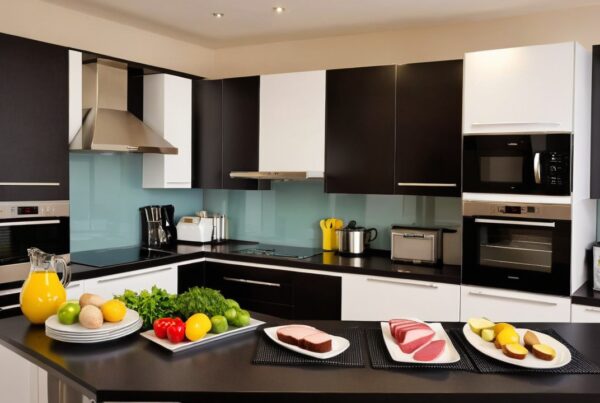How Many Table Spoons Are in A Cup?
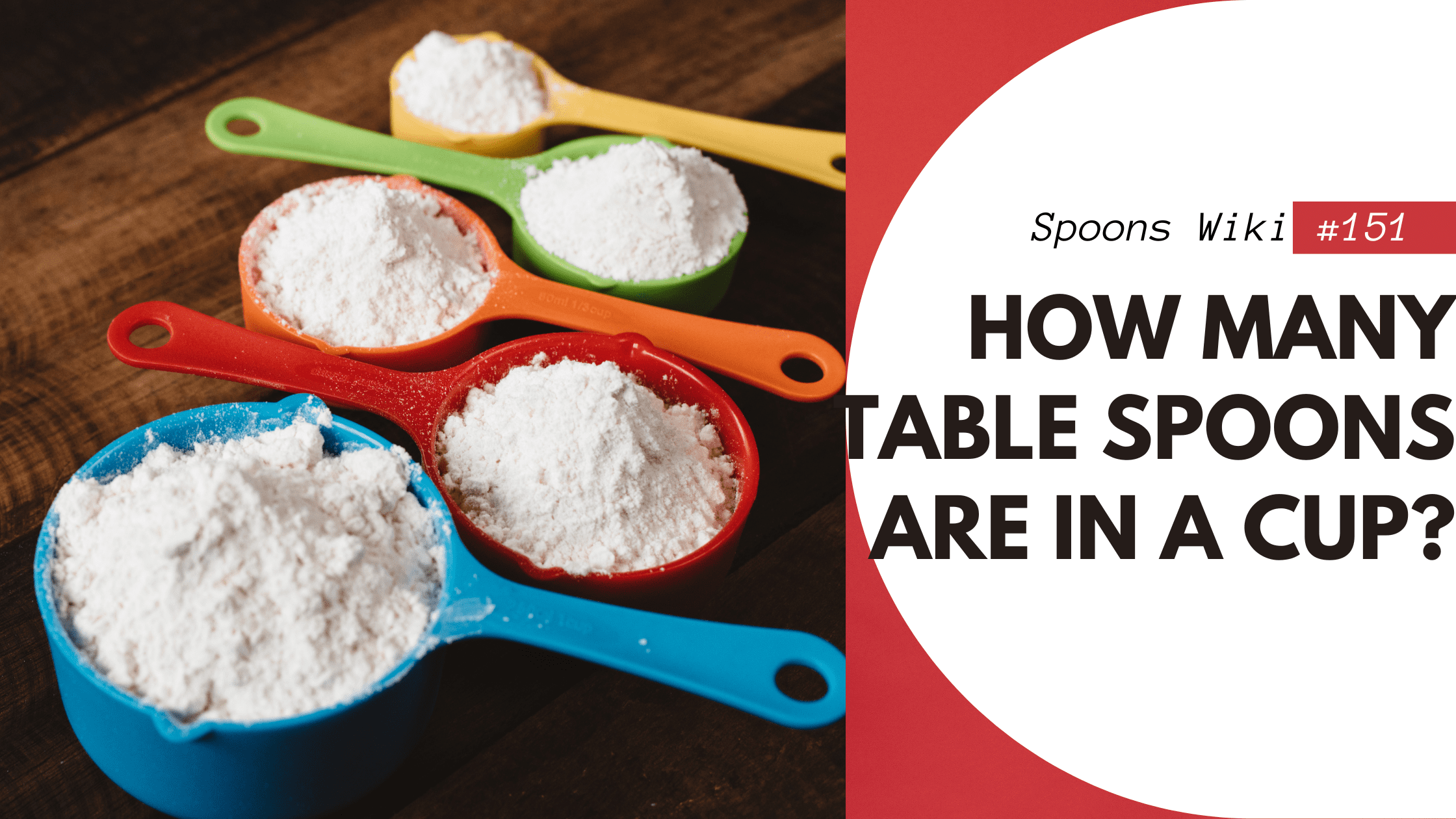
Cooking and baking can be confusing sometimes, especially when recipes use different measurements like cups and tablespoons. Ever wonder how many tablespoons you need to make a cup? And does it matter what you’re measuring? Don’t worry! This article will help you understand these measurements so you can cook and bake anything without getting mixed up.
Read More: The Best Over the Range Microwaves for Modern Kitchens
What Is a Tablespoon?
A tablespoon is a unit of volume equal to 3 teaspoons or 1/2 fluid ounce. One tablespoon is equivalent to 14.7868 milliliters, but for nutrition labeling, it is rounded to 15 milliliters.
The tablespoon is a US customary unit of volume. Tablespoons can be abbreviated as tbsp, T, Tbls, or Tb. For example, 1 tablespoon can be written as 1 tbsp, 1 T, 1 Tbls, or 1 Tb.
The tablespoon is a commonly used measurement, particularly in cooking and baking recipes, to measure larger volumes compared to the smaller teaspoon.
What Is a Cup?
A cup is a unit of volume equal to 16 tablespoons or 8 fluid ounces. One standard US customary cup is equal to 236.588 milliliters, but for nutrition labeling, it is defined as 240 milliliters.
The metric cup is different, equal to 250 milliliters, while in Japan a cup is 200 milliliters. The cup is a US customary unit of volume.
Cups can be abbreviated as c or C. For example, 1 cup can be written as 1 c or 1 C. The cup is a commonly used measurement unit, especially in cooking and baking recipes, to measure larger volumes compared to smaller units like tablespoons and teaspoons.
It’s important to note the difference between a US customary cup, a metric cup, and a teacup, as they represent different volumes.
Cup to Tablespoon Conversion Table
| Cups | Tablespoons |
| 1 c | 16 tbsp |
| 2 c | 32 tbsp |
| 3 c | 48 tbsp |
| 4 c | 64 tbsp |
| 5 c | 80 tbsp |
| 6 c | 96 tbsp |
| 7 c | 112 tbsp |
| 8 c | 128 tbsp |
| 9 c | 144 tbsp |
| 10 c | 160 tbsp |
| 11 c | 176 tbsp |
| 12 c | 192 tbsp |
| 13 c | 208 tbsp |
| 14 c | 224 tbsp |
| 15 c | 240 tbsp |
| 16 c | 256 tbsp |
| 17 c | 272 tbsp |
| 18 c | 288 tbsp |
| 19 c | 304 tbsp |
| 20 c | 320 tbsp |
| 21 c | 336 tbsp |
| 22 c | 352 tbsp |
| 23 c | 368 tbsp |
| 24 c | 384 tbsp |
| 25 c | 400 tbsp |
| 26 c | 416 tbsp |
| 27 c | 432 tbsp |
| 28 c | 448 tbsp |
| 29 c | 464 tbsp |
| 30 c | 480 tbsp |
| 31 c | 496 tbsp |
| 32 c | 512 tbsp |
| 33 c | 528 tbsp |
| 34 c | 544 tbsp |
| 35 c | 560 tbsp |
| 36 c | 576 tbsp |
| 37 c | 592 tbsp |
| 38 c | 608 tbsp |
| 39 c | 624 tbsp |
| 40 c | 640 tbsp |
Different Cup And Tablespoon Sizes
Converting between cups and tablespoons can be tricky because there are so many sizes out there. That’s why we made a converter to help you out. If you want to learn more about the different sizes of cups and tablespoons worldwide, check out our article. We’ve also included a simple table for quick reference. Plus, you can convert cups to pints too!
| Recipe Country | ML | US Tablespoons (14.79ml) | Metric Tablespoons (15ml) | UK Imperial Tablespoons (17.76ml) |
| US Customary Cup (recipes) | 236.59 | 16 | 15.77 | 13.32 |
| US Legal Cup (nutrition) | 240 | 16.23 | 16 | 13.51 |
| UK Metric Cup | 250 | 16.91 | 16.67 | 14.08 |
| UK Imperial Cup (old recipes) | 284.13 | 19.22 | 18.94 | 16 |
| Australian Cup | 250 | 16.91 | 16.67 | 14.08 |
| Canadian Cup | 250 | 16.91 | 16.67 | 14.08 |
| South African Cup | 250 | 16.91 | 16.67 | 14.08 |
Teaspoons to Tablespoons Conversions
Here’s a handy guide for converting teaspoons to tablespoons:
- 1 tablespoon equals 3 teaspoons.
- ¾ teaspoon equals ¼ tablespoon
- 1 ½ teaspoons equal ½ tablespoon
- 3 teaspoons equal 1 tablespoon, which also equals ½ fluid ounce
- 6 teaspoons equal 2 tablespoons, which is the same as ⅛ cup or 1 fluid ounce
- 12 teaspoons equal 4 tablespoons, or ¼ cup, or 2 fluid ounces
- 16 teaspoons equal 5 ⅓ tablespoons, or ⅓ cup, or 2 ⅓ fluid ounces
- 24 teaspoons equal 8 tablespoons, or ½ cup, or 4 fluid ounces
- 36 teaspoons equals 12 tablespoons, or ¾ cup, or 6 fluid ounces
- 48 teaspoons equals 16 tablespoons, or 1 cup, or 8 fluid ounces
- 96 teaspoons equals 32 tablespoons, or 2 cups, or 16 fluid ounces, which is also 1 pint
- 192 teaspoons equals 64 tablespoons, or 4 cups, or 32 fluid ounces, which is also 1 quart
- 768 teaspoons equals 256 tablespoons, or 16 cups, or 128 fluid ounces, which is also 1 gallon
Understanding Basic Measurement Units
Understanding basic measurement units is important for cooking and baking:
- Teaspoons (tsp) are the smallest and are used for small amounts like spices and extracts.
- Tablespoons (tbsp) are three times bigger than teaspoons and are good for things like butter and oil.
- Cups (c) are larger and are used for ingredients like flour and milk.
- Fluid ounces (fl oz) are for liquids such as water and juice.
- Milliliters (ml) and liters (L) are used in the metric system, common outside the US.
- Knowing the difference between US customary and metric systems is key for international recipes.
- Volume measurements are about space, while weight measurements are about mass. Some recipes prefer weight (like grams or ounces) for accuracy
Mathematical Formula For Simple Measuring Conversion
👉 Converting Between Cups and Tablespoons:
- To Convert Tablespoons to Cups:
- Divide the number of tablespoons by 16.
For example, if you have 32 tablespoons, you’d do 32 ÷ 16 = 2 cups.
👉To Convert Cups to Tablespoons:
- Multiply the number of cups by 16.
For instance, if you have 2 cups, you’d do 2 × 16 = 32 tablespoons.
👉Other Common Conversions:
- Teaspoons to Tablespoons: 1 tablespoon equals 3 teaspoons.
- Tablespoons to Fluid Ounces: 1 fluid ounce equals 2 tablespoons.
- Cups to Pints, Quarts, and Gallons: 2 cups make 1 pint, 4 cups make 1 quart, and 16 cups make 1 gallon.
- Fluid Ounces to Cups: 8 fluid ounces equal 1 cup.
For conversions between US customary and metric systems, you can remember that 1 cup equals approximately 240 ml. If you need more conversions, online converters can help out quickly and easily.
How to Select the Right Measurement Tool in the Kitchen?
Here, I will say, that if you do not like feeling like converting every time before recipes then you should consider some alternative ways like digital measuring spoons. Here’s a simple guide to picking the right tools for your kitchen:
➜ Measuring Spoons:
These are small spoons used for measuring tiny amounts. You’d use them for things like spices, baking powder, or small amounts of liquid ingredients. They usually come in sets with different sizes like teaspoons and tablespoons. These types of measuring spoons are easy to use hen especially you are making a new recepie with controlled ingredients. Look at these below measuring spooos, this set of measuring spoons comes with 5 teaspoons as well as two tablespoons and a leveler. So, simply by using such tools, you can precisely measure your cooking ingredients.
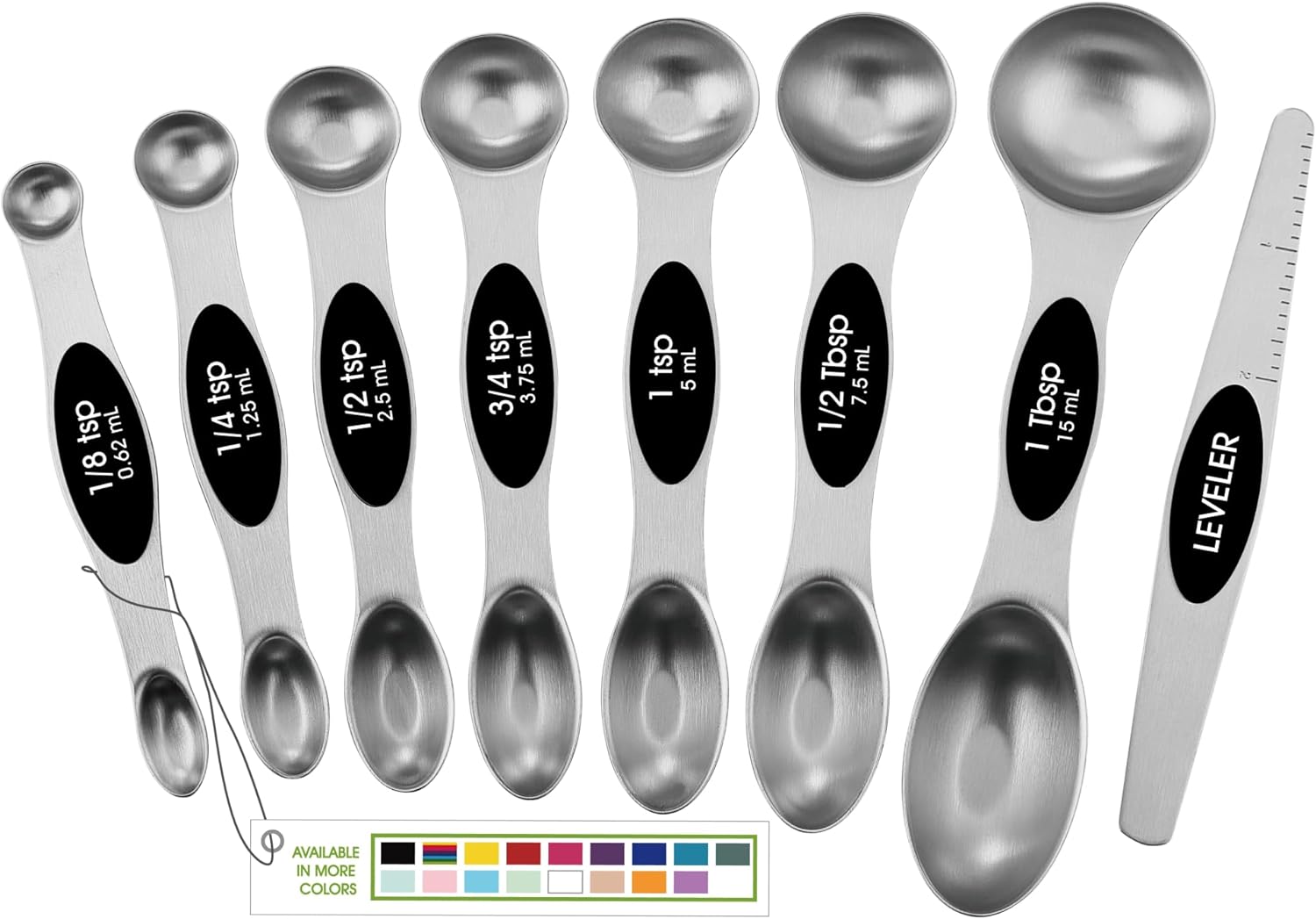
➜ Measuring Cups:
These are like small containers with handles. They’re for measuring bigger amounts of dry stuff like flour, sugar, or oats. Measuring cups come in different sizes, so you can measure the exact amount you need. They’re pretty easy to use, you just scoop and level off the top.
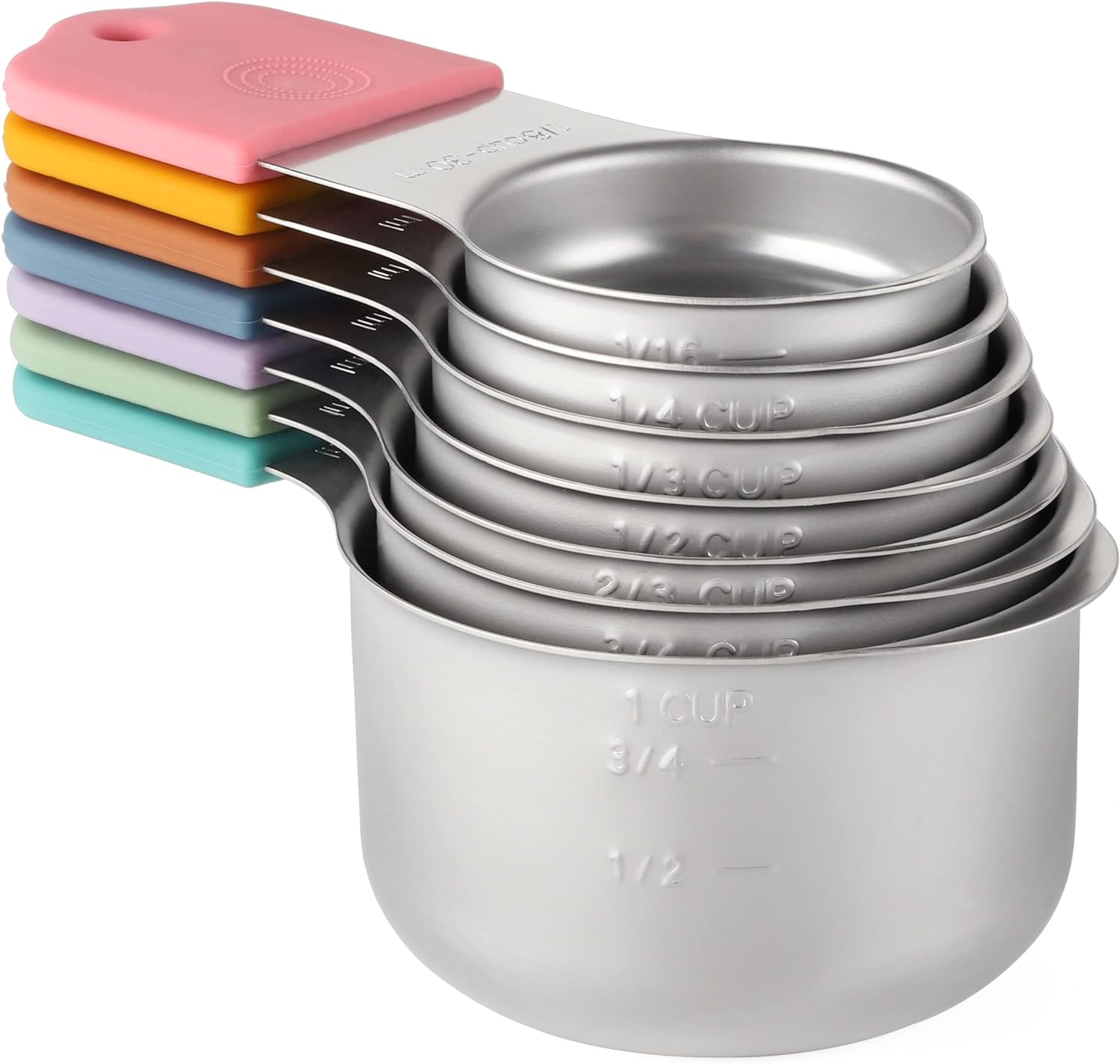
➜Liquid Measuring Cups:
These are special cups designed for measuring liquids like water, milk, or juice. They have a spout and a handle, which makes it easy to pour without spilling. They usually have measurements marked on the side, so you can see exactly how much you’ve poured.
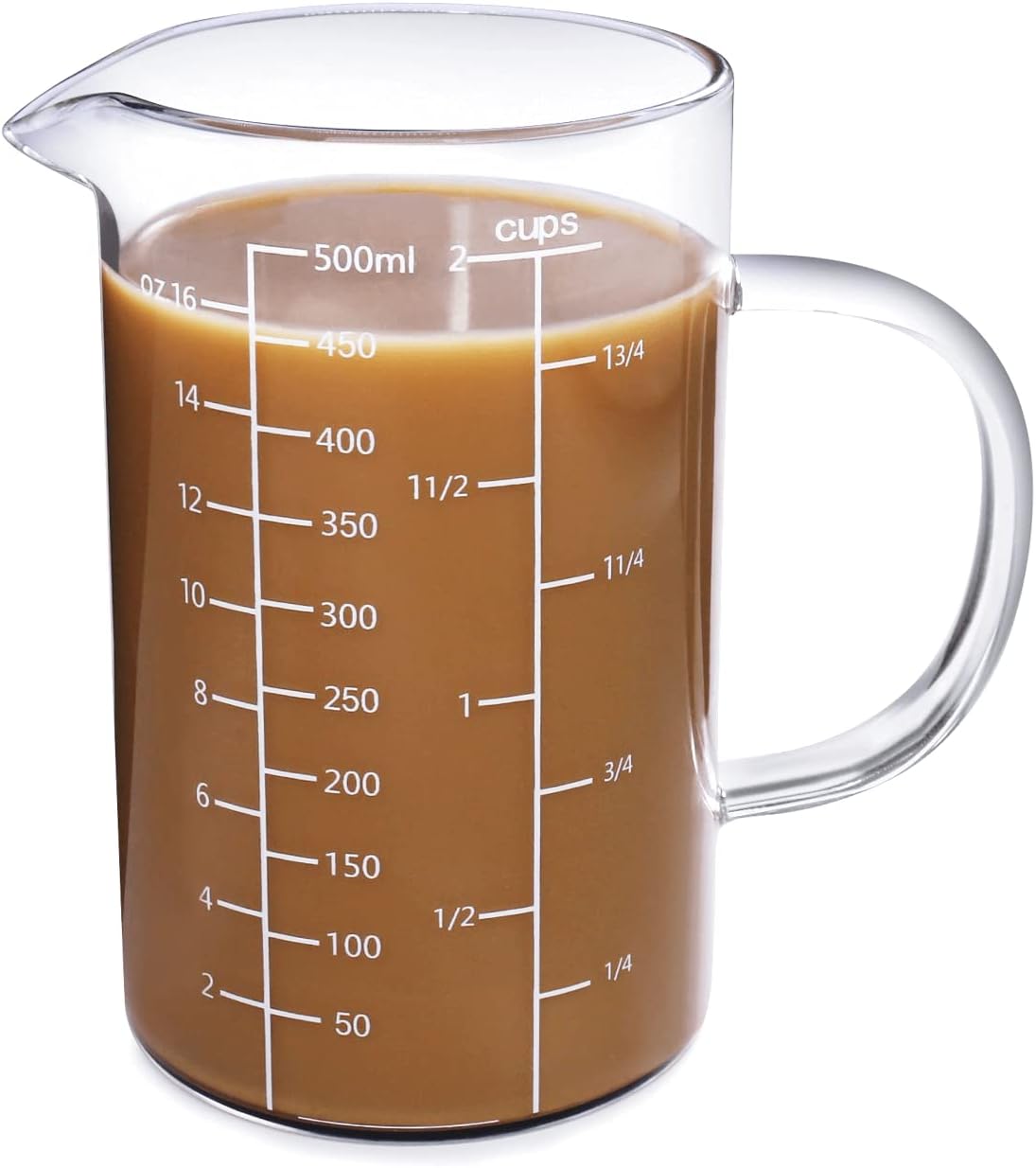
➜Digital Kitchen Scale:
This is a gadget that helps you measure ingredients by weight. It’s like a small flat machine with a digital screen. You put your bowl or container on top, then add your ingredients until you reach the right weight. It’s really precise and great for recipes that need exact measurements.
Frequently Asked Questions (FAQs)
How many tablespoons in a cup of butter?
A cup of butter has 16 tablespoons. Butter is often sold in sticks, with 1/2 cup (8 tablespoons) or 1 cup (16 tablespoons) options, making it easy to measure.
How many tablespoons in a cup of sugar?
There are 16 tablespoons in a cup of sugar. This applies to cane sugar, powdered sugar, or coconut sugar.
How many tablespoons in a cup of flour?
A cup of flour also has 16 tablespoons, regardless of the type of flour.
How many tablespoons in a cup of coffee?
A standard measuring cup holds 16 tablespoons, but coffee cups vary in size, typically holding between 12 to 24 tablespoons.
How many tablespoons in a cup?
There are 16 tablespoons in a cup, which applies to any ingredient measured by volume.
How many tablespoons in a cup and a half?
In a cup and a half (1.5 cups), there are 24 tablespoons.
How many tablespoons in a cup of brown sugar?
Like white sugar, brown sugar also has 16 tablespoons in a cup. Pack the brown sugar tightly into the measuring cup for accuracy.
How many tablespoons in a half cup?
A half cup (1/2 cup) contains 8 tablespoons.
How many tablespoons in a quarter cup?
There are 4 tablespoons in a quarter cup.
What’s the conversion from tablespoons to cups?
To convert tablespoons to cups, divide the number of tablespoons by 16. For example, 32 tablespoons equal 2 cups.
How do I convert cups to tablespoons?
To convert cups to tablespoons, multiply the number of cups by 16. For instance, 1.5 cups equals 24 tablespoons.
Can I use a regular spoon as a tablespoon?
While a regular spoon may be similar in size, it’s best to use an actual tablespoon measurement for accurate results in cooking and baking.
How to Convert Cups to Tablespoons?
Converting cups to tablespoons is easy. Here’s how:
Conversion Ratio: Multiply the volume in cups by the conversion ratio: 16 tablespoons per cup.
Formula: You can use this formula: tablespoons = cups × 16.
Conclusion
Knowing how to switch between tablespoons and cups is super important for cooking and baking. When you understand these measurements and use the right tools, you can make sure your food always tastes great and turns out just how you want it.
Now that you’ve learned the basics, it’s time to have fun trying out different recipes! Whether you’re making dinner or baking something sweet, your new skills will help you make delicious dishes every time you cook. So, get ready to explore and have fun in the kitchen!

